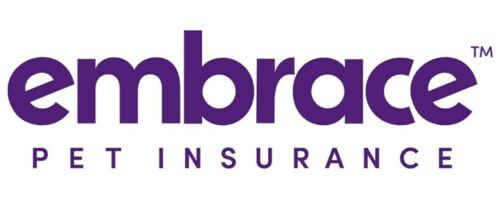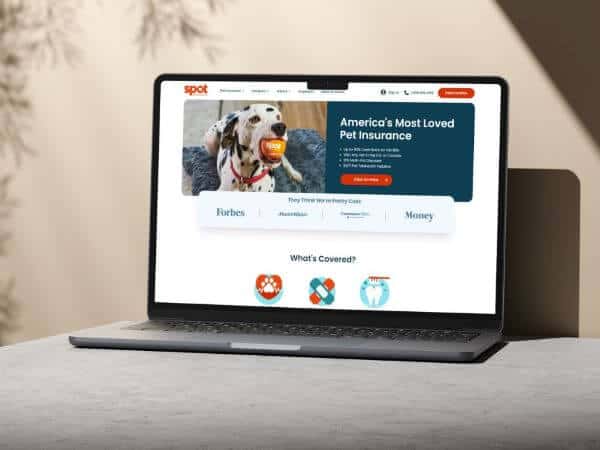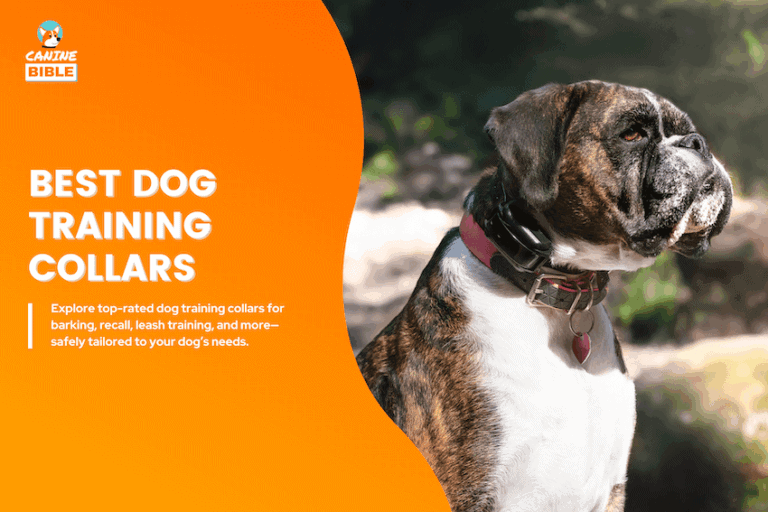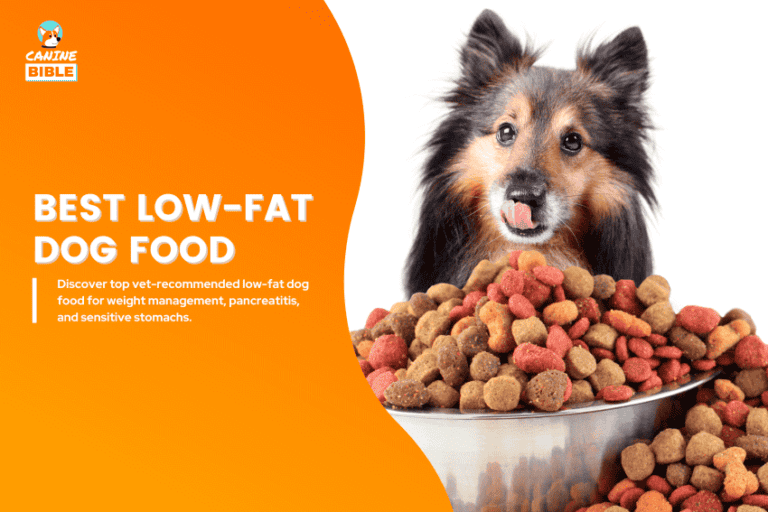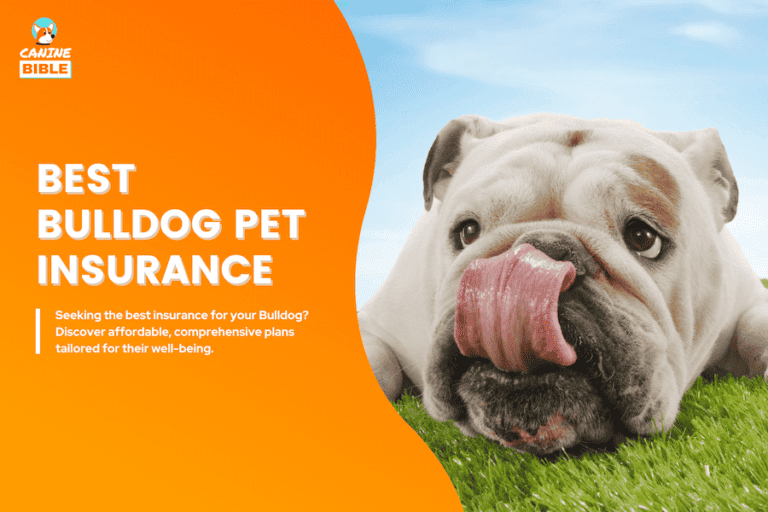Best Pet Insurance For Great Danes in 2025: Vet-Approved
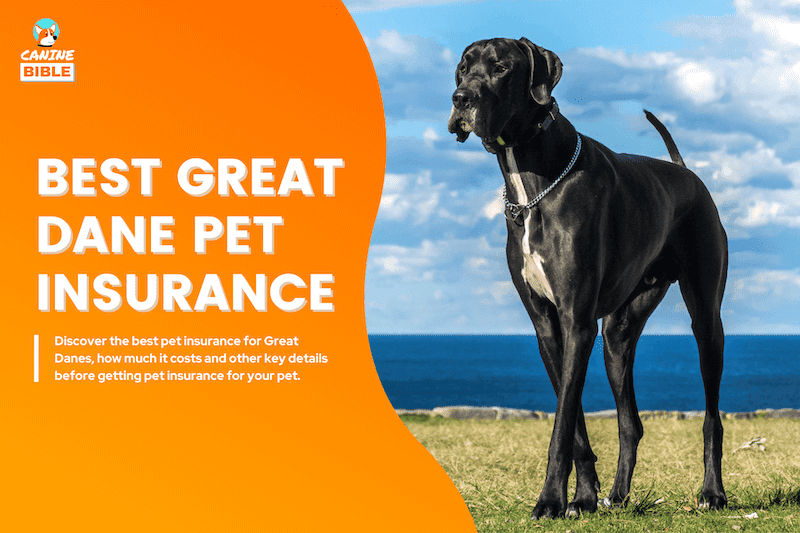
Canine Bible is reader-supported. We receive affiliate commissions via some of our links. Learn more.
Great Danes are known for their towering size, gentle temperament, and deep devotion—but owning one also comes with big responsibilities and even bigger potential vet bills. If your Great Dane suddenly develops a health issue like bloat or cardiomyopathy, would you be financially prepared to handle the emergency? With their predisposition to costly and complex medical conditions, pet insurance isn’t just a nice-to-have—it can be a financial lifesaver. This comprehensive guide breaks down everything you need to know about finding the best pet insurance for Great Danes. We’ll explore their breed-specific health risks, the real cost of treatment, and how insurance can protect both your dog and your wallet.
Best Great Dane Pet Insurance — At A Glance
What Is Great Dane Pet Insurance?
Pet insurance is a healthcare policy that provides coverage for your pet, offering reimbursement for specific veterinary expenses. This ensures that your savings remain secure, even in the event of unforeseen medical costs. Such a policy involves a monthly premium. Should your pet fall ill or sustain an injury, you would file a claim with the insurance company to recoup your expenses.
How Much Does Pet Insurance Cost For Great Danes?
The cost of insurance for a Great Dane will vary based on several factors, including the pet’s existing health conditions, sex, age, and the area you reside in. It’s essential to note that as veterinary technology advances and claims increase in your locality, your insurance premiums may also rise. For example, even if your Great Dane is quoted at $70 per month, this rate is not fixed and could change.
According to our research, plans for Great Danes can range from $38 to $98. You may spend more or less depending on where you live, the deductible rate, and the reimbursement percentage you choose. Great Dane dog owners can expect to pay an average of $76 per month in premiums.

The monthly premium for Great Danes
pet insurance: $38 to $98
Pet Insurance Quotes For Great Dane
We compared quotes from renowned pet insurance providers to estimate your expected average monthly premium for different life stages in Great Danes.
| Company | Deductible | Reimbursement | Annual Reimbursement Limit | Monthly Price | Location | Gender | Breed | Age |
|---|---|---|---|---|---|---|---|---|
| Lemonade | $500 | 70% | $100,000 | $69.54 | SC, 29044 | Male | Great Dane | 5 years |
| Spot | $500 | 70% | Unlimited | $78.84 | SC, 29044 | Male | Great Dane | 5 years |
| Healthy Paws | $500 | 70% | Unlimited | $79.94 | SC, 29044 | Male | Great Dane | 5 years |
| Lemonade | $500 | 70% | $100,000 | $67.80 | CA, 95842 | Female | Great Dane | 2 year |
| Spot | $500 | 70% | Unlimited | $91.98 | CA, 95842 | Female | Great Dane | 2 year |
| Healthy Paws | $500 | 70% | Unlimited | $78.89 | CA, 95842 | Female | Great Dane | 2 year |
| Lemonade | $500 | 70% | $100,000 | $37.80 | TX, 75219 | Female | Great Dane | 6 months |
| Spot | $500 | 70% | Unlimited | $98.44 | TX, 75219 | Female | Great Dane | 6 months |
| Healthy Paws | $500 | 70% | Unlimited | $85.52 | TX, 75219 | Female | Great Dane | 6 months |
Puppy monthly cost: $73.92
Adult monthly cost: $73.92
Senior monthly cost: $76.11
Is Pet Insurance for Great Danes Worth It?
The decision to purchase pet insurance for your Great Dane depends on several factors, including your pet’s health risk profile, tolerance for financial risk, and overall financial situation. Consider a scenario where your Great Dane falls seriously ill or suffers an injury from an accident, incurring veterinary bills in the thousands. On average, the most common dog treatments cost $254.[1] A more severe and common condition in Great Danes, like Patellar Luxation, can cost between $1,500 and $3,000 to diagnose and treat. Can you pay for an unexpected $3,000 veterinary bill out-of-pocket? Most people can’t. The Federal Reserve reports that 40% of Americans lack sufficient savings to cover a $400 emergency, and 57% of U.S. adults are unable to afford a $1,000 emergency expense.[2]
Investing in pet insurance for your Great Dane is a wise choice to protect your finances and ensure your dog can receive the necessary care. With pet insurance, should an unexpected accident or illness occur, you could be reimbursed for 70% to 100% of the veterinary costs, depending on the details of your plan and provider. Pet insurance provides peace of mind, knowing that your finances and your pet’s health are protected.
Predict & Protect Your Great Dane’s Future Health
Canine Bible uses years of clinical health findings, pet insurance data points, trends, and surveys to identify common health conditions in dogs. By gaining insight into your Great Dane’s potential future health issues and risks, you can take preventive action today and ensure that your Great Dane does not become a part of these statistics.
1 in 3
dogs will need emergency veterinary treatment every year.
$250 to $8K
is the average cost of unexpected veterinary care for dogs.[3]
720
Great Dane dog parents seek health advice every month.
13%
of Great Danes’ deaths are caused by Gastric Dilatation.[4]
If you know your dog’s breed is predisposed to certain health issues, we strongly advise getting a pet insurance policy while your dog is still healthy. Chronic health conditions, emergencies, and vet visits can rack up costs throughout your Great Dane’s life. Pet Insurance can spare you a lot of financial trouble. Dogs that develop chronic conditions under pet insurance coverage are guaranteed reimbursement for these issues for the duration of their life.
Most Common Health Conditions In Great Danes
| Health Condition | Risk Profile | Estimated Treatment Cost | Insurance Reimbursement* | Description |
|---|---|---|---|---|
| Hip Dysplasia | High | $3,600 | $3,240 | Improper formation of the hip socket, leading to pain and arthritis. |
| Gastric Dilatation-Volvulus (Bloat) | High | $7,500 | $6,750 | Life-threatening condition where the stomach twists and fills with gas. |
| Cardiomyopathy | High | $2,500 | $2,250 | Heart muscle disease that reduces the heart’s ability to pump blood. |
| Hypothyroidism | Medium | $550 | $495 | Thyroid hormone deficiency resulting in weight gain and lethargy. |
| Wobbler Syndrome | High | $4,500 | $4,050 | Neurological condition affecting the spine and coordination. |
| Osteosarcoma | High | $6,000 | $5,400 | Bone cancer that frequently affects large and giant breed dogs. |
| Tricuspid Valve Disease | Medium | $2,000 | $1,800 | Heart valve disorder that can lead to heart enlargement and failure. |
| Skin Infections | Medium | $450 | $405 | Bacterial or fungal infections due to skin folds or allergies. |
*The overall cost of diagnosing and treating illnesses and injuries may vary. The above cost is based on average veterinary bill reports and claims submitted by pet insurance policyholders. We’ve used a 90% reimbursement rate for this scenario.
Why Get Pet Insurance?
| Benefits for Great Danes | Benefits for Owners |
|---|---|
| Access to better care and health outcomes due to financial barriers being removed | Decreases the likelihood of economic euthanasia when the cost is a limiting factor for treatment |
| Cover hereditary conditions and get better breed-specific care | Reduces unexpected veterinary costs |
| Prompt access to medical treatments | Financial peace of mind |
| Ongoing access to healthcare and emergency care | Cover third-party liabilities |
| Preventive care options | Avoid rising veterinary costs |
| Facilitates treatment from specialists | Can help you find your missing/stolen pet |
How to Pick The Best Great Dane Pet Insurance
- Pick a coverage type: Choose between accident-only, accident & illness, or plans with wellness coverage—based on your pet’s needs and your budget.
- Check whether your pet is eligible: Most plans require pets to be 6–10 weeks old; older pets may face coverage limits.
- Pre-existing conditions: These are typically excluded unless they are curable and have been untreated for at least 12 months.
- Review cost versus benefits: Compare quotes and weigh the monthly premium against the plan’s coverage.
- Breed-specific needs and coverage: Factor in your Great Dane’s age, health, and hereditary conditions when choosing a plan.
- Compare insurance providers: Get multiple quotes and research reputable insurers offering plans for Great Danes.
- Check the fine print and exclusion policy: Review limitations, especially for hereditary conditions and certain breeds.
- Check waiting periods: Coverage typically begins 14 days after enrollment; certain conditions may have longer waiting periods.
- Choose a deductible and reimbursement level: Higher deductibles lower monthly costs but increase out-of-pocket expenses during claims.
- Sign up as early as possible: Younger pets are eligible for lower premiums and may secure better rates at enrollment.
- Look for additional perks and discounts: Some insurers offer multi-pet discounts, microchip benefits, and coverage for alternative therapies.
Best Pet Insurance For Great Danes
Why we recommended it: We named Lemonade our best overall pet insurance for Great Dane for its comprehensive coverage, pricing, availability, and customer service. Lemonade premiums typically start at just $10 per month, the lowest in the industry. We ran a few quotes for a healthy Great Dane at a $500 deductible and 70% coverage to estimate your monthly premium. Based on our research, you can expect to pay between $38 and $69 monthly. We love that Lemonade is tech-forward, making it easy to manage your policy and file claims through an app. Their plans cover accidents and illnesses, including injuries, poisonings, broken bones, sprains, infections, general sicknesses, cancer, heart disease, hip dysplasia, hernias, skin conditions, and more. They also offer several add-ons to help pet owners pay for exam fees, physical therapy, and preventive care.
Why we recommended it: Spot Pet Insurance offers seven annual limit options, three reimbursement levels, and five annual deductibles. They offer the lowest deductible in the industry ($100), meaning that when your Great Dane gets sick, you pay less upfront before your plan starts paying. With numerous customization options, this company is our top pick for finding a plan that meets your specific financial needs and those of your pet. Spot’s policies also cover some items, such as exam fees and microchipping, that many other pet insurance providers don’t offer. They also provide one of the most affordable plans for accident-only coverage, making it an ideal option for pet owners who require only minimal coverage. We ran a few quotes for a healthy Great Dane with a $500 deductible and 70% coverage. Based on our research, you can expect to pay between $79 and $98; however, prices may vary depending on your location, the Great Dane’s age, and other factors. Spot covers you when your Great Dane gets hurt unexpectedly, from tooth extractions and torn ligaments to surgery and hospitalizations.
Why we recommended it: Embrace Pet Insurance distinguishes between curable and incurable conditions. If your pet has a curable condition (such as an ear infection or gastrointestinal issue) that has been symptom-free for 12 months, Embrace may provide coverage, unlike most providers that exclude pre-existing conditions entirely. This makes it an excellent choice for pet parents dealing with common, manageable health concerns. Beyond this standout benefit, Embrace offers comprehensive accident and illness coverage, including cancer, chronic conditions, orthopedic issues, alternative therapies, and more. Claim processing is typically quick, and the company receives high marks for customer service. We ran a quote for a healthy Great Dane with a $500 deductible and 70% reimbursement rate; monthly premiums ranged between $80 and $85, depending on age, breed, and location. With flexible coverage options, fewer exclusions, and generous benefits for curable conditions, Embrace is a top-tier pick, especially for pets with a medical history.
Other Pet Insurance Options
👉 Looking for more options? Explore our in-depth guide to the Best Pet Insurance Companies to find the right coverage for your furry friend.
Types of Pet Insurance Coverage For Great Danes
| Plan Type | Description | Common Items Covered |
|---|---|---|
| Accident-Only | Covers accident-related care like ingestion of foreign objects, poisoning, or car accidents. It’s more affordable than accident & illness policies and suitable for pets with pre-existing conditions. | Broken bones, torn ligaments, bite wounds, poisoning, injuries, eye injuries, snake bites, and toxic food ingestion. |
| Accident & Illness | Most popular plan covering both accidents and illnesses. Does not cover pre-existing conditions, so early enrollment is important. | Accidents plus illnesses such as obesity, UTIs, cancer, hypothyroidism, digestive issues, IVDD, vomiting and diarrhea, arthritis, and parasites. |
| Wellness (not insurance) | Add-on preventive care plan that covers routine expenses. Not a true insurance product but offered during enrollment. | Flea, tick, and worm treatments, rabies vaccinations, microchipping, deworming, teeth cleaning, routine tests, annual exams, spaying and neutering, and urine analysis. |
What Does Pet Insurance Not Cover?
When selecting pet insurance for your Great Dane, it is essential to review and understand the policy’s exclusions. Exclusions vary based on the pet insurance company and the policy you choose. Be sure to review the list of exclusions before purchasing pet insurance to confirm that your Great Dane is adequately covered by the plan you select and help prevent surprises in the future.
- Grooming
- Pre-existing conditions
- Unrelated veterinary services
- Behavioral training, therapy, or treatment
- Breeding and pregnancy
- Dog food, dietary, or nutritional supplements
- Cosmetic procedures
- Boarding and transportation
Top Reasons to Get Insurance for Great Dane Puppies
| Reason | Explanation |
|---|---|
| Lower Premiums | Insuring your Great Dane while they’re young and healthy means you’ll lock in more affordable rates before age-related health risks emerge. |
| Covering Future Conditions | Great Danes are genetically prone to conditions like hip dysplasia, cardiomyopathy, and bloat. Pet insurance won’t cover pre-existing conditions, so early enrollment ensures coverage for future issues that arise later. |
| High Accident & Illness Risk | Due to their size and deep chest, Great Danes face a higher risk of life-threatening issues like gastric dilatation-volvulus (bloat), which requires immediate emergency care. |
| Costly Veterinary Care | As one of the largest breeds, medical treatments, surgeries, and medications for Great Danes often cost significantly more due to their weight and size. |
Cost of Great Dane Vet Bills
This is the average amount you will pay out-of-pocket if you don’t have pet insurance or a wellness plan.
Average Cost of Typical Vet Procedures
| Typical Vet Procedure | Average Cost of Procedure |
|---|---|
| Puppy vaccinations | $75 – $100 |
| Flea & tick prevention | $40 – $200 |
| Heartworm prevention | $24 – $120 |
| Spay or neuter surgery | $200 – $800 |
| Annual exam | $240 – $600 |
| Teeth cleaning | $200 – $500 |
| Microchip | $40 |
Average Cost of Emergency Vet Procedures
| Typical Vet Procedure | Average Cost |
|---|---|
| General consultation/exam | $100 – $150 |
| General bloodwork | $80 – $200 |
| X-rays | $150 – $250 |
| Ultrasound | $300 – $600 |
| 1–2 day hospitalization | $600 – $1,700 |
| 3–5 days hospitalization | $1,500 – $3,500 |
| Wound treatment & repair | $800 – $1,500 |
| Emergency surgery | $800 – $2,500 |
| Oxygen therapy | $500 |
Source: 5 & 6
Factors That Impact the Cost of Your Great Dane Pet Insurance Policy
Deductibles, co-pays & coverage limits
The lower the amount you pay out of pocket for your pet’s care, the higher your insurance premium will be. For instance, selecting a deductible of $300 instead of $800 means you’ll receive reimbursement more quickly for your pet’s care, but it also results in higher premium payments.
Breed
Certain breeds are prone to congenital health issues. For example, breeds such as Great Dane often struggle with Cancer and bloat. These breed tendencies could influence your pet insurance expenses.
Location
Local veterinary care expenses are taken into account by pet insurance companies when setting the price of your policy.
Pet’s Age
Older pets generally face more health problems, which results in higher insurance premiums because there is a higher risk for the insurance company.
Understand Insurance Policy Basics
How Does Pet Insurance Work?
Imagine your Great Dane’s pet insurance policy has the following terms:
Now, let’s say your Great Dane incurs a veterinary bill of $1,500 for medical treatment.
This example assumes you haven’t yet met your deductible for the year. If you’ve already met your annual deductible, you won’t have to pay again for this or any new claims within the same policy year. And, since every claim you make contributes to your annual payout limit after the insurance company pays $700 for this claim, the remaining yearly payout limit is $15,000 – $700 = $14,300.
Frequently Asked Questions
The Bottom Line
Great Danes are incredible dogs, but a significant percentage of them face numerous health issues and require constant veterinary visits. This situation can become quite expensive, which is why we recommend considering dog insurance for your giant friend. In the event of a pet emergency or accident, you won’t have to choose between your Great Dane and your finances with pet insurance. Remember, your pet is a valued member of your family and deserves protection. We hope this guide has helped you make an informed decision about pet insurance.
Like It? Subscribe & Share!
Disclaimer: The details about insurance company offerings, including prices, availability, and contract specifics, can change at any time and are at the discretion of the insurance company. This website does not control these changes. The information provided here is for reference only. It is important to thoroughly read and understand your policy before signing up for a new insurance contract, as your situation may differ from the examples used in this article.
Sources
Canine Bible uses only high-quality sources, including peer-reviewed studies, to support the facts within our articles. Read our editorial process and product review methodology to learn more about how we fact-check, test products, and keep our content accurate, reliable, and trustworthy.
- Breiner, B. (2023). Average Cost of Pet Insurance: 2023 Quotes. ValuePenguin.
- Gillespie, L. (2023, February 23). Bankrate’s Annual Emergency Fund Report. Bankrate.
- Healthy Paws Pet Insurance. (2019). 2019 Cost of Pet Health Care Report.
- Universities Federation for Animal Welfare. (n.d.). Great Dane – Gastric dilatation-volvulus syndrome. UFAW.
- Average Cost Of Emergency Vet Visits | Find Out What You Will Pay. (2020, March 19). Emergency Vets USA.
- Cost of Owning a Dog: From Initial Cost to Annual Essentials. (n.d.). The Dog People.



